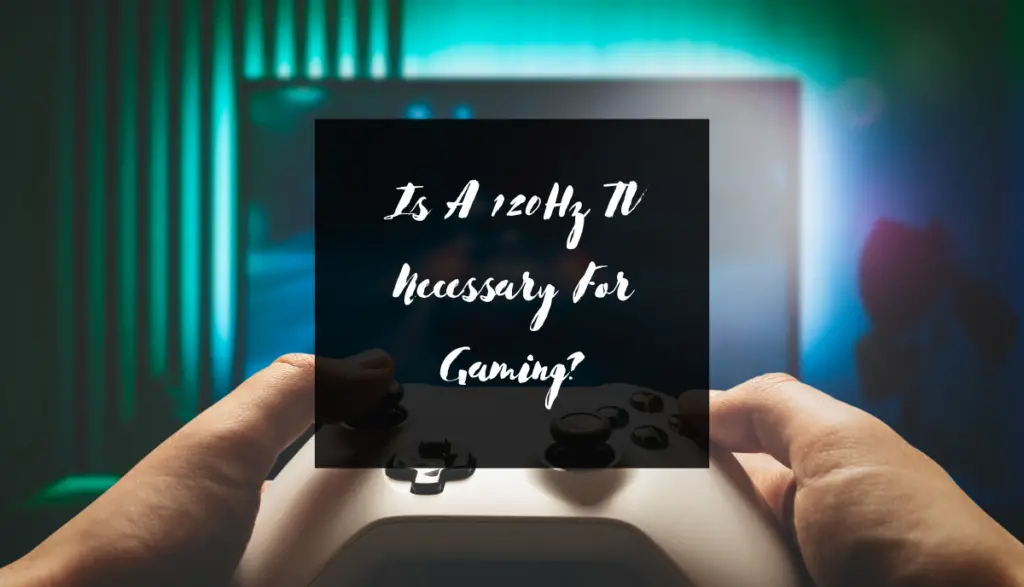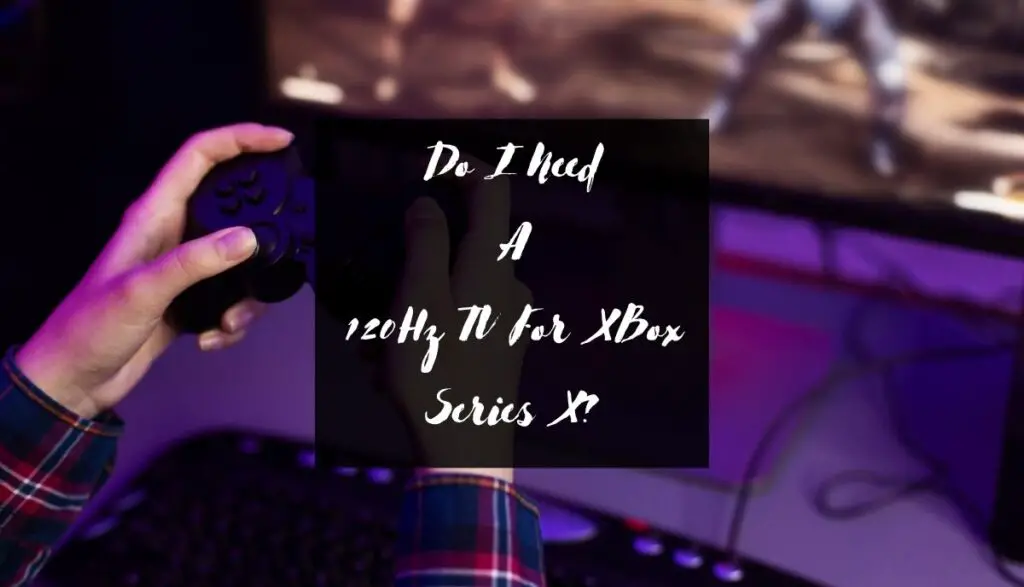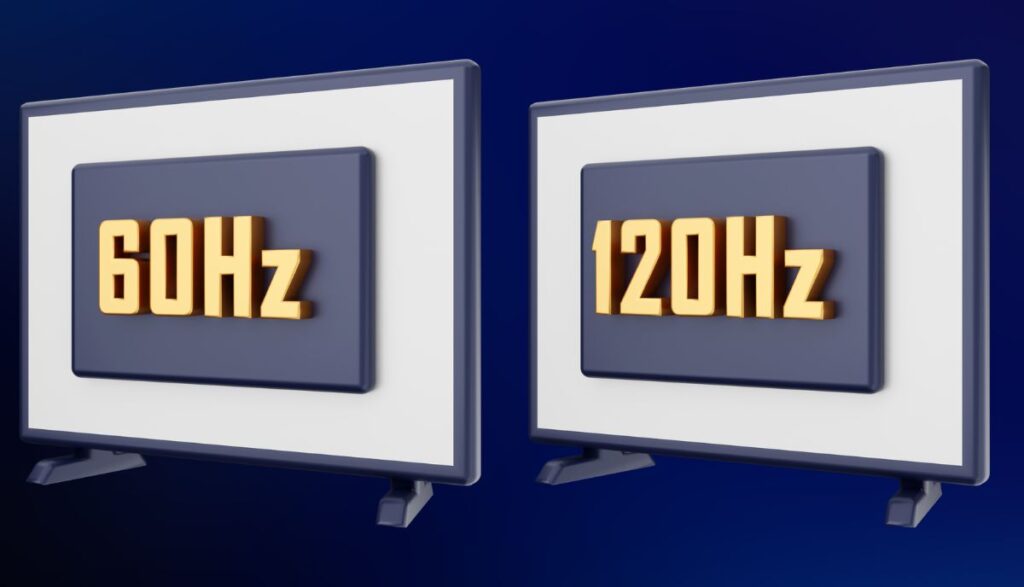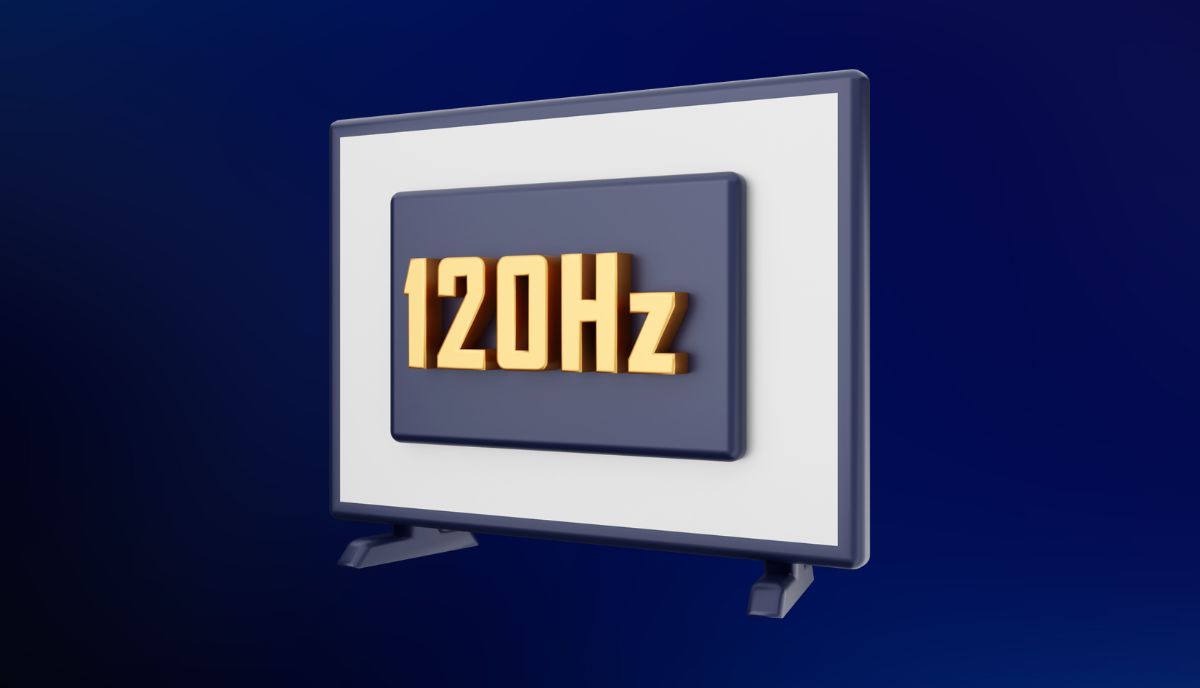A higher refresh rate delivers smoother, clearer images. However, it serves no significant purpose for TV shows and movies because they use 30fps and 24fps, respectively. You’re more likely to see the benefits of 120Hz with live sports.
Have you heard of motion blur? Objects in motion look softer than their stationary counterparts.

As you can see, the picture remains largely unchanged. You can see what’s happening. But for some viewers, the softer surfaces are a distraction. A higher refresh rate can eliminate blurring.
This matters because live sports consist of images in which objects move at a fast pace. You can see why a sports fanatic would prioritize a 120Hz TV. The average viewer is unlikely to notice the difference between higher and lower refresh rates while watching movies and TV shows.
1). Understanding the Refresh Rate
‘120Hz’ is the refresh rate. USA Today describes the refresh rate as the number of times a TV draws an image in a second. To understand this concept, consider the technology behind a camera.
A camera records videos by taking multiple pictures. Showing those pictures in succession creates motion. A popular example of the workings of this technology is those flipping picture books from your childhood.
An artist draws the same picture on each page again and again. But they add slight differences each time. Flipping the pages creates the illusion of motion. Cameras follow the same principle, and so do TVs.
The more images a TV can display in a second, the smoother and more appealing the picture.
2). Understanding The Frame Rate
The refresh rate and frame rate are similar. The refresh rate is concerned with the number of frames a TV can display per second. The frame rate, on the other hand, looks at the number of frames a source device can render within a second. For instance, a gaming console has a frame rate.
3). Frame Rate VS Refresh Rate
You want the frame rate to match or divide neatly into the refresh rate. For instance, TV networks use 30fps to broadcast shows, which fits the average TV’s 60Hz refresh rate. Movies are not so lucky.
Studios shoot them at 24fps, which clashes with a 60Hz TV because dividing 60 by 24 gives you 2.5. TVs use 3:2 pulldown (doubling the frames in alternating sequences) to solve this problem.
Unfortunately, 3:2 pulldown creates a skipping or stuttering effect. 120Hz TVs are the superior solution because 24fps fits evenly into 120Hz.
Is A 120Hz TV Necessary For Gaming?

A paper from the Tokyo City University Graduate School of Environmental and Information Studies (Hideo Miyachi, Koshiro Murakami, Kazuya Miyashita) noticed a difference in performance between 60, 120, and 240Hz among eSports athletes.
They argued that higher refresh rates gave players a slight advantage. However, Juho Huhti (University of Vaasa, School of Technology and Innovation Information Systems) clarified in this paper that player capabilities were a crucial factor.
Higher refresh rates will only benefit players with a greater-than-average skill level. For most gamers, the refresh rate doesn’t matter.
Do I Need A 120Hz TV For PS5?

It depends on your budget. The higher the fresh rate, the more expensive the TV. The PS5 is a pricy console. Can you afford to increase your expenses by purchasing a 4K 120Hz TV as well? If your local store sells cheap 120Hz TVs, remember that many models don’t offer a native 120Hz refresh rate.
They use various tricks (such as Black Frame Insertion and Interpolation) to create the effect of a 120Hz refresh rate in a 60Hz TV. Some manufacturers are honest. They use terms like ‘TruMotion 120Hz’ on the packaging, revealing that their TV doesn’t possess a native 120Hz refresh rate. They may even reveal the model’s native refresh rate (usually 60Hz).
Others will outrightly claim to offer a 120Hz refresh rate even though the hardware cannot exceed 60Hz. Do thorough research before making a purchase. You don’t want to spend your hard-earned money on a TV that isn’t actually 120Hz.
Do I Need A 120Hz TV For XBox Series X?

You don’t need a 120Hz TV for the Xbox. More than likely, you want one, and for a good reason. A 4K 120Hz screen promises smoother, sharper images. While still visible, the 60Hz image looks blurry. The 120Hz picture is crystal clear. However, that difference, while noticeable, won’t keep you from playing the game at 60Hz. Therefore, it comes down to ‘Want,’ not ‘Need.’ 120Hz is a luxury. You can play Xbox games on 60Hz TVs.
Do I Need A 120Hz TV For Movies?

You don’t need a 120Hz TV for movies. Most movies are shot at 24fps. A 60Hz TV is more than sufficient. TV models that artificially increase the frame rate (to produce 120Hz in a 60Hz TV) create the so-called ‘Soap Opera Effect’ in movies. This is where the image becomes unnaturally fluid. Fortunately, you can turn these motion-smoothing features off.
Is A Higher Refresh Rate Important For Sports On TV?

Sports is the only medium that makes 120Hz necessary. Motion blur becomes a challenge when objects on the screen move. This is more likely to happen in sports, where the image tears as the camera pans quickly across the screen.
If your TV can automatically adjust the refresh rate, you will notice that it only switches to a higher refresh rate during moments of intense action. For example, when a car zooms down a road in a video game or when a soccer player sprints across a field.
The soap opera effect is only a problem for movies and TV shows. Viewers want their movies and TV shows to look like movies and TV shows. The hyperrealistic effect that motion-smoothing creates is unsettling for films. The opposite is true for sports.
Can You Notice The Difference Between 60Hz And 120Hz On A TV?

Many people question the necessity of 120 and 144Hz monitors. After all, the human eye has limitations. Its perception cannot exceed 60Hz. But if that is true, what purpose do 120Hz monitors serve?
First of all, the experts at Device Tests have clarified that a human’s brain does most of the seeing. The eyes merely transmit information. The brain can perceive 120Hz. Joyce Schenkein, from this Forbes article, gave the example of an autistic woman who could see a light’s 60-cycle alternation.
She would scream whenever the lights in her bright yellow kitchen turned on. This speaks volumes about the human brain’s acute perception. 120Hz TVs promise smoother images with little or no motion blur.
Higher refresh rates are particularly useful in competitive gaming, where reaction times can make the difference between success and failure. Enthusiastic gamers prefer to match their console’s frame rate to the TV’s refresh rate. They tend to favor TVs with a native 120Hz as opposed to TVs that rely on motion-smoothing features to replicate the benefits of a native 120Hz TV.
Refresh rates higher than 120Hz are unlikely to affect your enjoyment. It is also worth noting that many casual viewers cannot differentiate between 60Hz and 120Hz TVs. Precluding situations in which a 60Hz TV’s limitations create dramatic side effects, such as juddering and tearing, the untrained eye is unlikely to appreciate a 120Hz TV’s capabilities.
Are There Drawbacks Of Having A 120Hz TV?
120Hz is only problematic when you buy a native 60Hz TV with motion-smoothing features. It will create a soap opera effect whenever you watch movies and TV shows. Otherwise, TVs with a native 120Hz refresh rate are usually superior to their 60Hz counterparts.
The only significant drawback is the price. 120Hz TVs and monitors are incredibly expensive. This is why casual viewers avoid them. They can’t justify the cost because they don’t see a significant difference between 120Hz and 60Hz.
Experts have also encouraged consumers to keep an eye on their utility bills. Monitors with a higher refresh rate do more work. So naturally, they use more electricity.

